Photos: Brewing the Perfect Cup at MEM Tea

Photo by Lloyd Mallison
Like wine, coffee, and craft beer before it, tea is growing in both popularity and prominence. Not since the Boston Tea Party 243 years ago have Bostonians been so interested in wet leaves.
Largely, this is thanks to Gilbert Tsang and his Watertown-based MEM Tea company, which provides the herbal goods at seemingly every quality coffee shop and eatery in the area. The company currently has more than 600 wholesale accounts, and at a new retail shop and training center in Davis Square, they now want people to learn how to make it.
“Education is really important for us,” Tsang says. MEM Tea has two, full-time staffers who travel to businesses to educate owners and servers on how to properly brew tea. “Tea is an afterthought. When we have our five minutes, we impress upon them that this is important, because it’s a representation of the restaurant. If it’s done incorrectly, it can leave a bad taste in the customer’s mouth.”
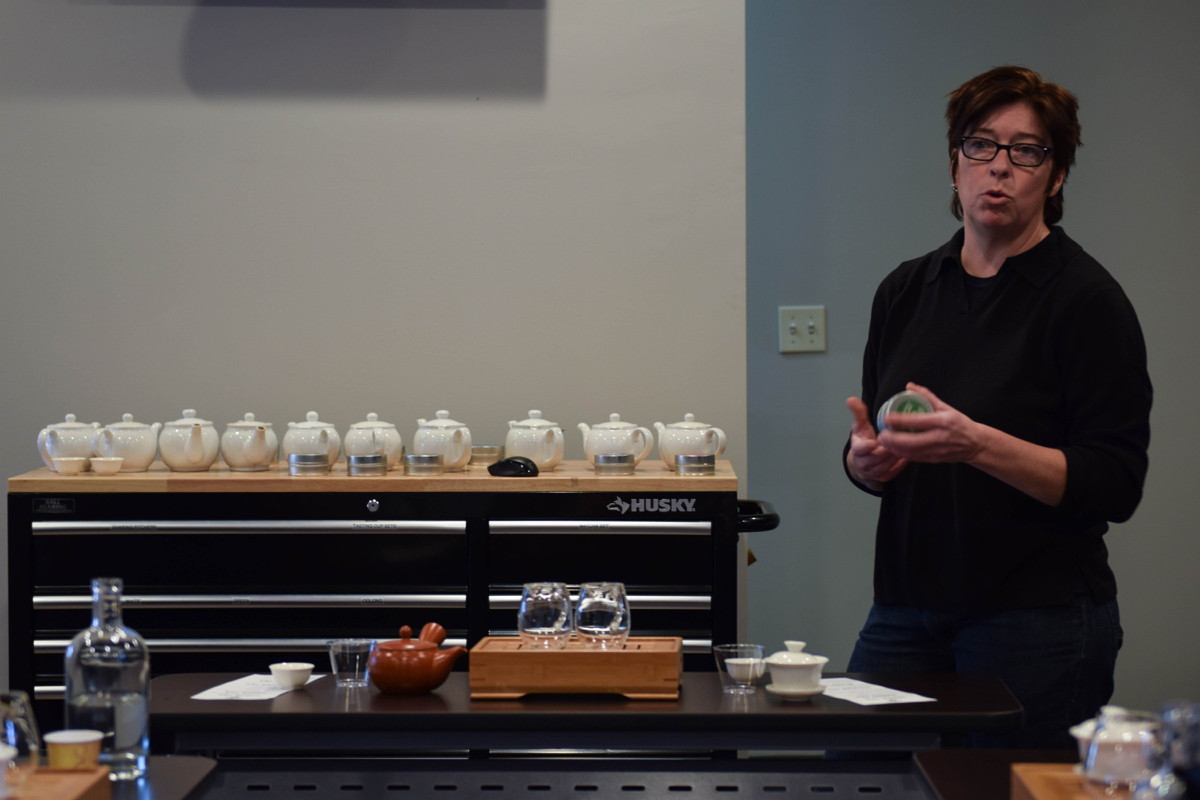
MEM Tea’s education director, Suanne Scalise teaches weekly sessions in the classroom at the back of the store, covering the different kinds of tea, how the plants are processed, and how best to brew each of them. She talks about the teas with the detail one might use to describe a fine wine. / Photo by Lloyd Mallison
Opening a training facility for their customers, and the general public, therefore made a lot of sense. At the new space, which opened in late September, people can sample, ask questions, and learn about MEM’s products, and true tea devotees (devo-teas?) can sign up for a Tea Basics course offered at the shop every Saturday for $10.
Tucked away in the back of the store, education director Suanne Scalise instructs the hour-long class—an introductory course on the five different kinds of tea: white, black, green, oolong, and Pu-erh. With a slideshow behind her and more than a dozen tea samples to share, she runs an engaging, interactive, and appetizing classes in a region full of academic institutions.
Last month, Boston went behind the scenes with Scalise to learn how to make the perfect cup of tea.

Photo by Lloyd Mallison
Scalise uses a Japanese kyusu, a traditional teapot, to pour gyokuro, a seaweed-y tasting green tea, into two pitchers. The wooden contraption they’re sitting on is called a tea boat, which holds water to rinse the equipment and catches any spills.
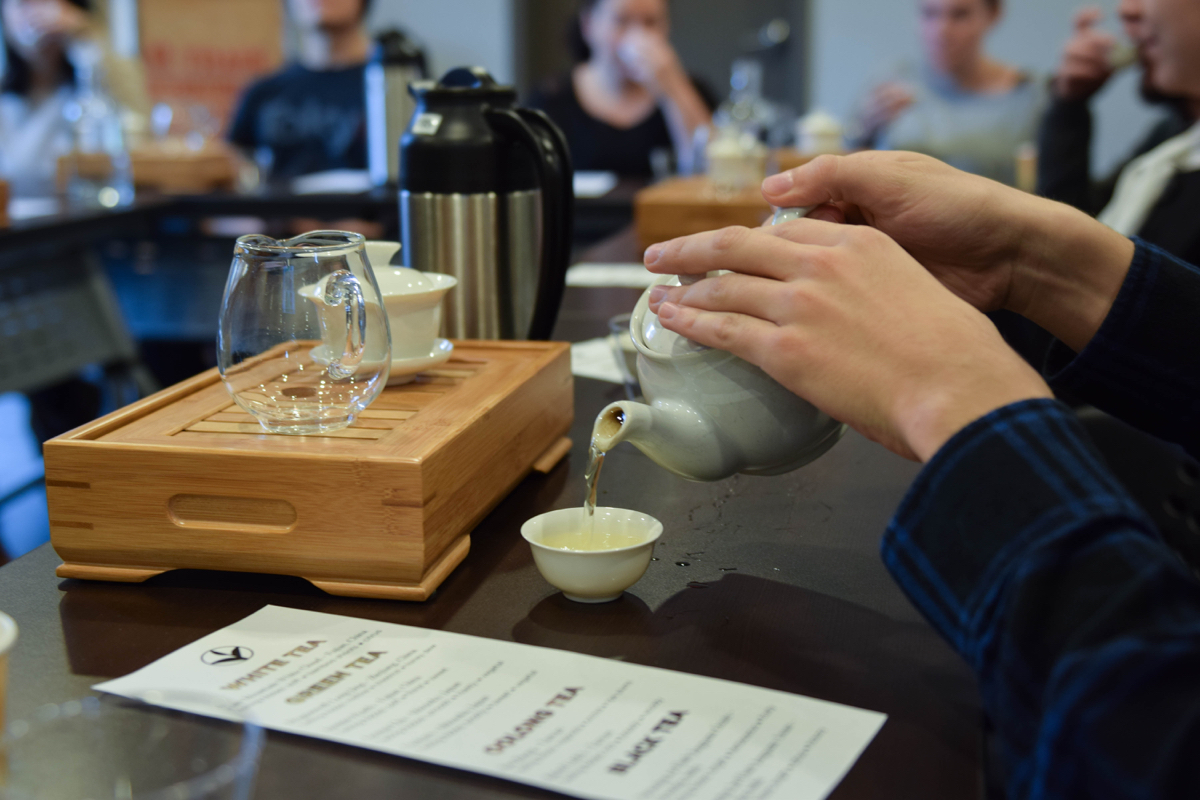
Photo by Lloyd Mallison
MEM employee and class attendee Alex Stand pours a cup of a Darjeeling black tea. It’s a rare kind called a “first flush,” which means it’s made of the first leaves picked from the tea plants in India.

Photo by Lloyd Mallison
Tea fans Cathy Sze and Lori Lee try to replicate Scalise’s pour from the gaiwan, a Chinese lidded bowl used for infusing tea leaves.

Photo by Lloyd Mallison
Scalise’s work bench contains a treasure trove of teas, each brightly labeled to correspond to their variety.

Photo by Lloyd Mallison
Some teas are just as appealing to look at before steeping as they are to taste. From left, genmai cha, a Japanese green tea which uses toasted rice to bulk it up; a first flush Darjeeling tea from India; decorated rooibos, made from the South African redbush; and Karnak elderflower.
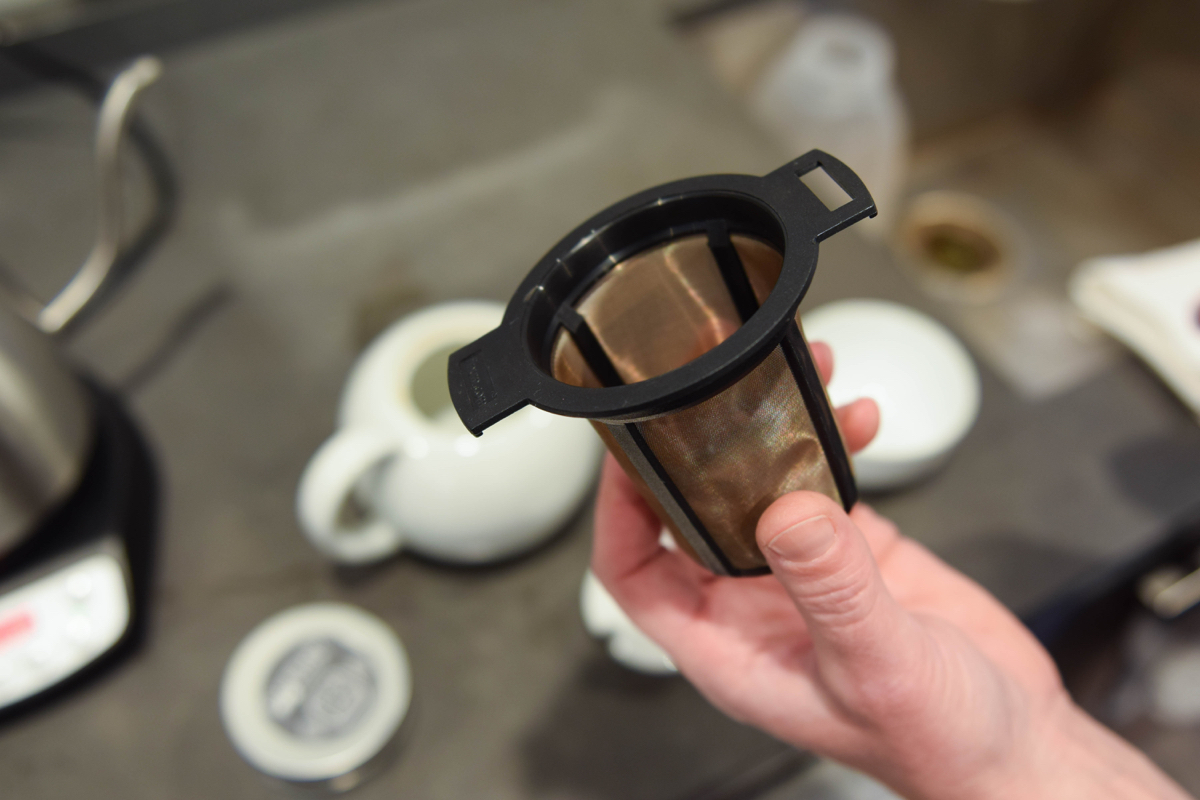
Photo by Lloyd Mallison
The quest for the perfect cup of tea began with a large mesh basket, for a super smooth cup as it filters out the tea leaves.
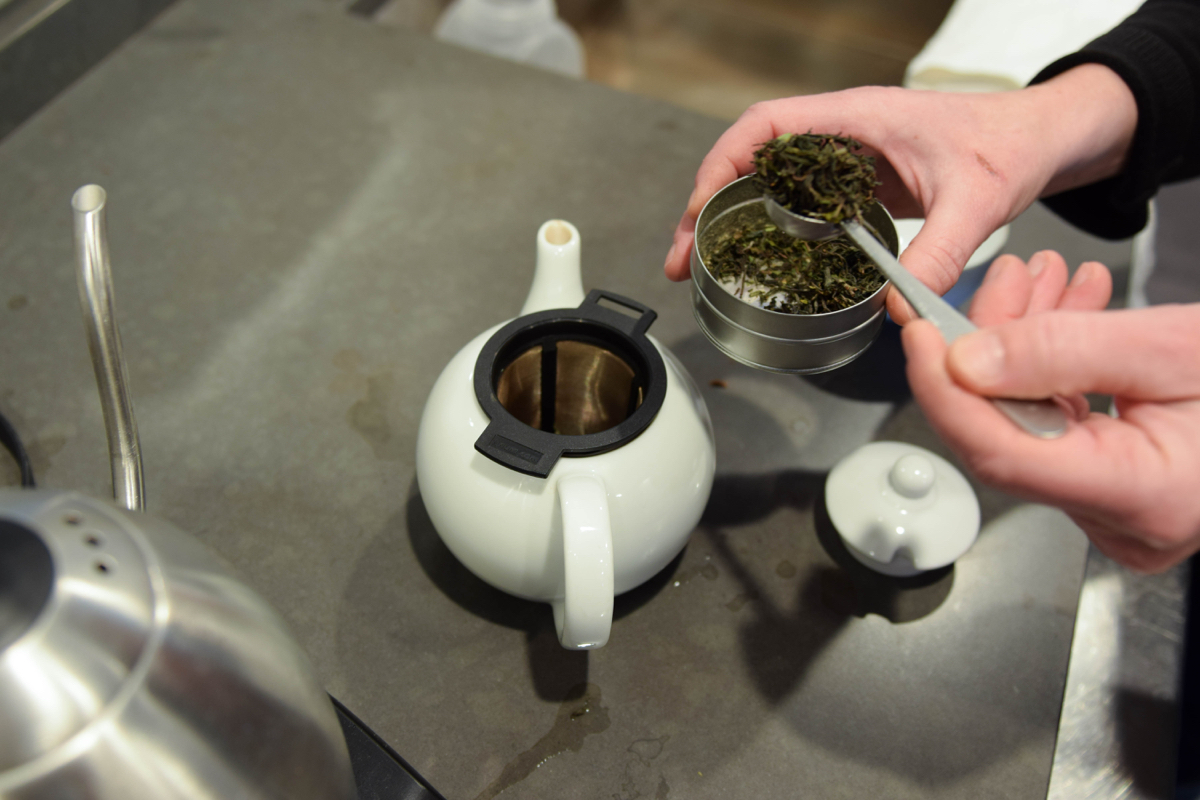
Photo by Lloyd Mallison
After swilling hot water around the teapot to warm it, Scalise adds her chosen tea leaves to the basket. She chose a Darjeeling first flush, the first harvest of tea leaves from an Indian Darjeeling variety. Darjeeling tea is also known as “the Champagne of Tea,” Scalise says.
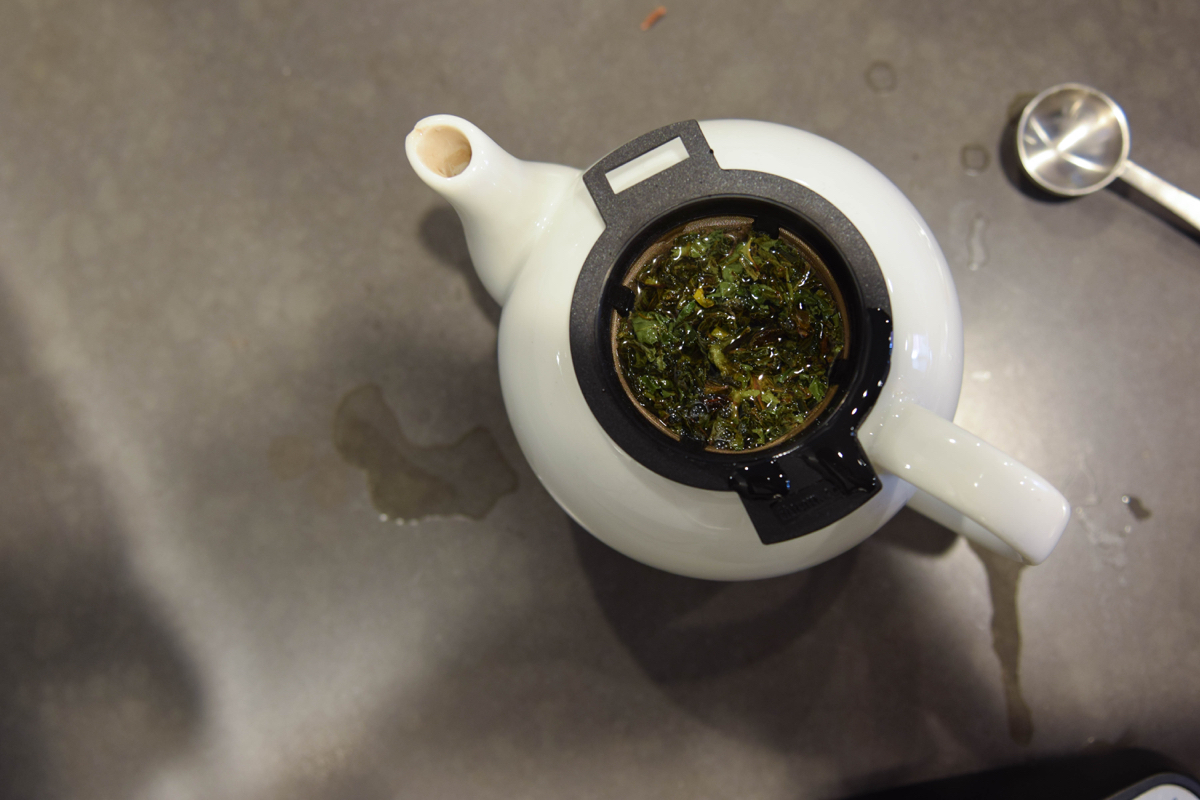
Photo by Lloyd Mallison
Scalise heated the water in the kettle to just under boiling point—195 degrees, to be exact—as more delicate teas, such as the Darjeeling first flush steep best in slightly cooler water.
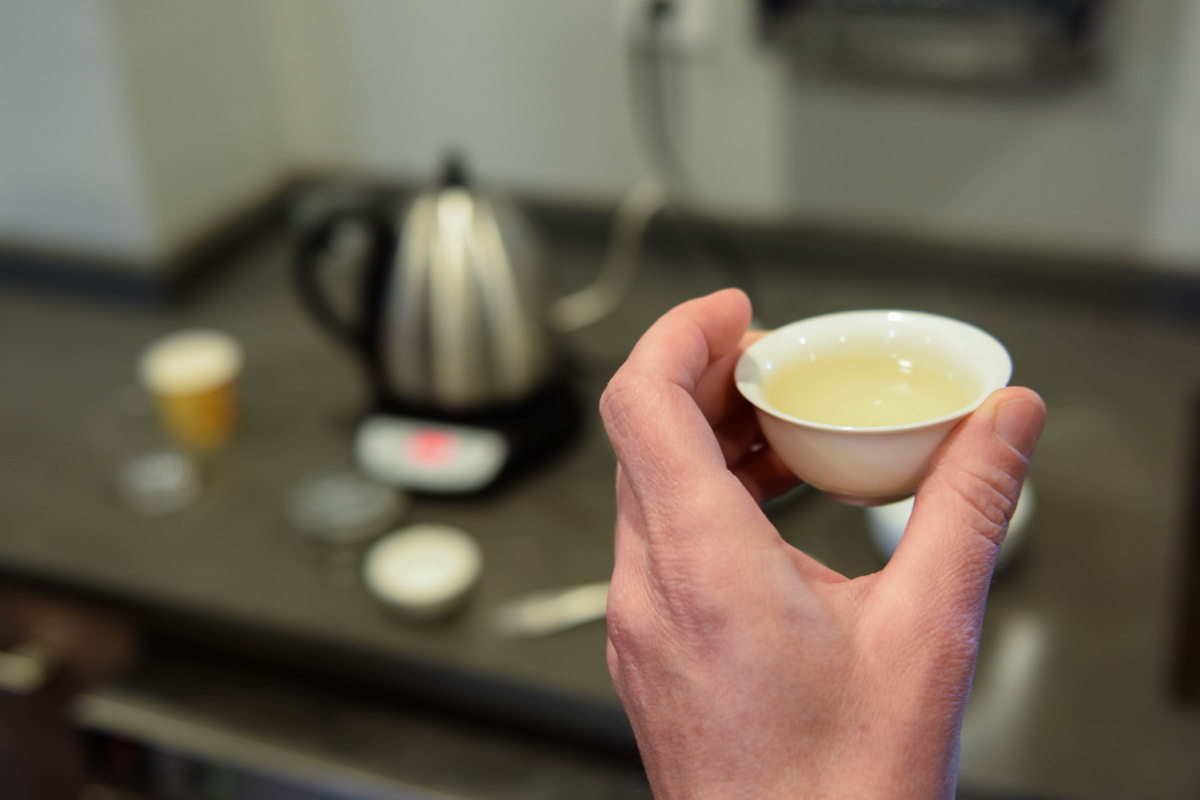
Photo by Lloyd Mallison
After steeping for 4 minutes, the tea was ready to serve—a light, bright, buttery brew, with just a hint of a fruity, citrus flavor.

Photo by Lloyd Mallison
Both MEM Tea’s rose cascarilla (left) and chai cascarilla (right) are made with cacao shells from Taza Chocolate Factory, which is also based in Somerville. It tastes like a grown-up hot chocolate.

Photo by Lloyd Mallison
In the front of the shop, Meg Tartasky explains to customers how Pu-erh tea leaves are pressed into cakes, and are so valuable that they were once used as currency in China.
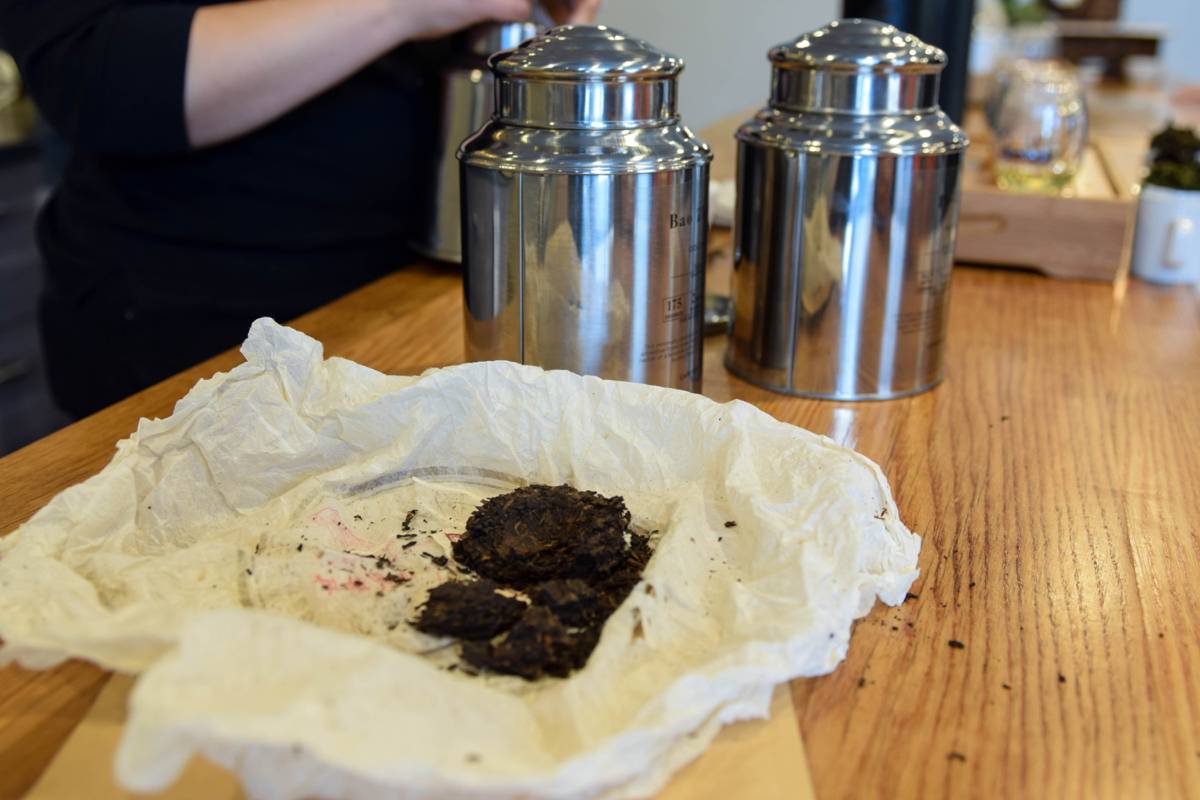
Photo by Lloyd Mallison
A whole cake of the compacted, high-quality leaves can be sold for thousands of dollars in China, Tartasky says.

Photo by Lloyd Mallison
The shelves behind the store’s main counter are brimming with scores of aluminum jars filled with tea leaves. The impressive, shiny display is the first thing that greets customers as they walk in the door, and provide an impressive, interactive backdrop for people making purchases or asking questions to the store workers.
MEM Tea, 196 Elm St., Cambridge, 617-627-9500, memteaimports.com.

